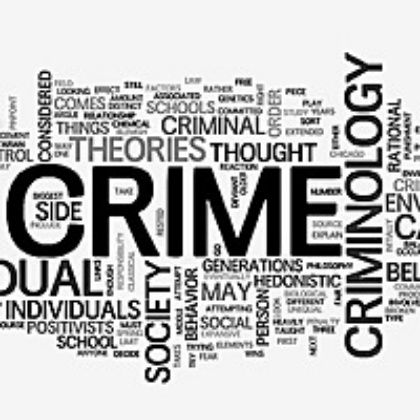
Introduction
Crime
is referred to as “the entire body of knowledge regarding the causes and
prevention of crime, punishment and correction of criminals, and operation of
correctional institutions and agencies.” Various theories have emerged over
time to shed light on the motivations behind criminal acts.
1. Classical
and Neo-classical Theories
The classical theory of crime, rooted in the works of
thinkers like Cesare Beccaria and Jeremy Bentham, is based on man’s rational
will (choices based on the perceived benefits) and Hedonism (pain/pleasure
principle). The British neo-classicist criminologists revised the classical
theory in 1810 and 1819. Even then, Neo-classicists continued to accept the
principles of free will of man and hedonism.
2. Biological
Theories (Positive School of criminology)
Biological theories of crime focus on the biological
and genetic factors such as brain structure, genetics, neurochemical imbalance
etc. that may predispose individuals to criminal behaviour. Lombroso, Ferri and
Garofalo were three major positivists who laid stress on physiological
incapacity of an individual or the biogenic or hereditary aspects of criminal
behaviour.
3. Psychogenic
Theories
The science of endocrinology led to the emphasis of
hormones and internal glands in the causation of crime. Schlapp linked crime
with endocrinological deficiencies and hormonal imbalance. Sheldon related
crime to physiological makeup; on the basis of their physique: endomorphic,
ectomorphic and mesomorphic. Psychogenic theories consist of psychological theories
(propounded by Goddard), Psychiatric theory (propounded by William and Healy)
and Psychoanalytical theory (propounded by Adler and others).
4. Strain
Theory (Anomie theory- Structural aspect)
Strain theory, developed by Robert K. Merton, suggests
that individuals are more likely to turn to crime when they experience a
disconnect between societal goals and the means available to achieve those
goals. Merton had identified five modes of adaptation available to those who
react to the goals and means of society: Conformity, Innovation, Ritualism,
Retreatism and Rebellion.
5. Social
Learning Theories
Social learning theories, influenced by the work of
Albert Bandura, posit that criminal behaviour is learned through interactions
with others. Individuals may observe, imitate, and internalize criminal conduct
if they are exposed to deviant role models or environments. The concept of
differential association emphasizes the influence of peers and social networks
on criminal behaviour.
6. Multiple-factor
approach
It
argued that the crime should be understood in terms of varied contributions
made by variety of factors instead of single factor such as inherited physical
traits, emotional disturbances etc. Scholars like William Healy, Cyril Burt,
Sheldon and Glueck believed in multiple-factor approach. Although,
criminologists like Cohen and many others criticized this approach.
Conclusion
Theories
of crime offer valuable insights into the intricate dynamics of criminal behaviour.
While these theories provide distinct perspectives, it is crucial to recognize
that criminal conduct is often the result of a complex interplay of multiple
factors, including individual, societal, and environmental elements. To
effectively address and prevent crime, it is necessary to consider the
multifaceted nature of criminal behaviour and employ a holistic approach that
incorporates insights from various theories, along with evidence-based
practices and policies.
Written
By:
Anshika
Srivastava
Volunteer-AFRS


